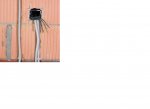K8MHZ
Senior Member
- Occupation
- Electrician
I found this pic on Wiki
View attachment 8675
http://en.wikipedia.org/wiki/Electrical_wiring
If this is UF, then it is not allowed in poured concrete, cement or aggregate. Does that mean poured concrete, poured cement or poured aggregate, or does it mean cement, aggregate or poured concrete? Is troweling in mortar acceptable? There is an exception for plaster. It doesn't say poured plaster, just plaster. I don't think I have ever seen plaster poured on a ceiling or a wall. Just the floor, and that was by mistake.
If this is NMS, then absolutely no concrete of any kind.
So then, what's going on with the cables on the floor?
I have never seen this type of wiring installation in the field.
View attachment 8675
http://en.wikipedia.org/wiki/Electrical_wiring
If this is UF, then it is not allowed in poured concrete, cement or aggregate. Does that mean poured concrete, poured cement or poured aggregate, or does it mean cement, aggregate or poured concrete? Is troweling in mortar acceptable? There is an exception for plaster. It doesn't say poured plaster, just plaster. I don't think I have ever seen plaster poured on a ceiling or a wall. Just the floor, and that was by mistake.
If this is NMS, then absolutely no concrete of any kind.
So then, what's going on with the cables on the floor?
I have never seen this type of wiring installation in the field.



